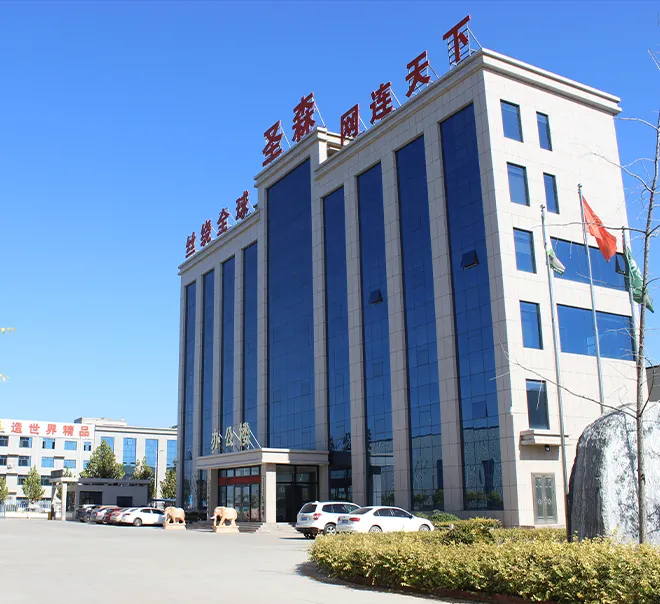-
 Phone:
Phone: -
 Email:
Email:

Exploring the Versatility and Applications of Baling Wire in Various Industries
The Versatility of Baling Wire An Essential Tool in Agriculture and Recycling
Baling wire, often an overlooked component in the world of agriculture and recycling, plays a crucial role in the efficient handling and transport of materials. This sturdy wire is used to bind bales of various products, ranging from hay and straw in farming to cardboard and metal in recycling facilities. Its significance is rooted not only in its functional attributes but also in the broader implications of its use in sustainable practices and economic efficiency.
What is Baling Wire?
Baling wire is typically made from high-tensile steel, designed to withstand heavy loads and resist breaking under stress. It comes in various diameters and strengths, allowing users to select the appropriate wire for their specific needs. This binding agent is used in the formation of bales, which are compacted bundles of material that make transport and storage easier. By compressing loose materials into manageable sizes, baling wire contributes to more efficient logistics in both farming and recycling processes.
The Role of Baling Wire in Agriculture
In agricultural settings, baling wire is most commonly associated with hay and straw production. Farmers use baling machinery to compress cut grass or straw into tight bundles, which are then secured using baling wire. This method not only preserves the quality of the forage but also makes it easier to transport and store. Properly secured bales are less likely to be damaged by weather or pests, thus ensuring that the feed remains nutritious for livestock throughout the year.
Moreover, the use of baling wire extends beyond simple binding. In organic farming, where sustainability is key, baling wire helps in the efficient management of crops and reduces waste. Farmers can easily transport resources to market or to feed their livestock without excess packaging materials, thus contributing to their eco-friendly practices.
Baling Wire in Recycling
baling wire

The importance of baling wire extends to recycling operations as well. In a world increasingly focused on sustainability, recycling facilities rely on baling wire to compress recyclable materials like cardboard, plastics, and metals into compact bales. This process is critical for maximizing storage space and efficient transportation to recycling plants. Baled materials are easier to handle, stack, and transport, leading to reduced shipping costs and a lower carbon footprint.
Additionally, the use of baling wire in recycling not only streamlines operations but also enhances safety. By creating stable and compact bales, workers face fewer hazards associated with loose materials, which could pose risks during handling and transport.
Economic and Environmental Benefits
The application of baling wire has significant economic implications. By facilitating the consolidation and transportation of goods, it reduces logistical costs for farmers and recyclers alike. In the agricultural sector, this means not only lower transportation expenses but also higher profit margins as farmers can sell their products more efficiently. In recycling, it enhances the overall profitability of the process by maximizing material recovery.
From an environmental perspective, the use of baling wire aids in reducing waste, promoting better resource management, and minimizing the need for excessive packaging. As societies strive towards greener practices, the role of such simple materials as baling wire becomes ever more vital.
Conclusion
In conclusion, baling wire is much more than a simple binding tool; it embodies the principles of efficiency and sustainability in both agriculture and recycling industries. As the world continues to prioritize eco-friendly practices, understanding and utilizing tools like baling wire will be essential for maximizing productivity while minimizing waste. Its versatility and durability make it an indispensable resource that supports our efforts toward a more sustainable future. Whether on the farm or in the recycling center, baling wire remains a silent yet impactful contributor to our economy and environment.
-
Reinforce Your Projects with Versatile Hexagonal Wire MeshNewsSep.12,2024
-
PVC WireNewsSep.12,2024
-
Maximize Your Closet Space with Clothes Hanger WireNewsSep.12,2024
-
Enhance Safety and Stability with Premium Rock Netting SolutionsNewsSep.12,2024
-
Bucket Handle WireNewsSep.12,2024
-
Baling Wire: Your Ultimate Solution for Securing and BundlingNewsSep.12,2024
-
What’s the Cost of Securing Your Property? Breaking Down Barbed Wire Fence PricesNewsAug.30,2024








